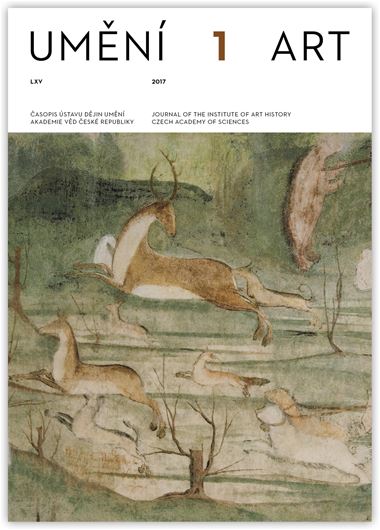Jan Dienstbier
Vain and Transitory Love: Mural Paintings in the Žirovnice Chamber and Mural Decoration in Late Gothic Secular Interiors
Marná a pomíjivá láska. Nástěnné malby žirovnické světnice a výmalba pozdně gotických profánních prostor
pp. 2–25
The study presents a detailed analysis of the late medieval murals in the so-called ‘green chamber’ of Žirovnice Castle. The paintings from the early 1490s are exceptional for their artistic quality and they are generally considered a significant example of ‘green chambers’, secular halls decorated by a green colour and floral ornament. Compared to the earlier literature the study focuses on the interrelations between the scenes depicted in the ‘green chamber’: the Judgement of Paris, Judith beheading Holofernes, the exemplum An Old Woman Is Worse than the Devil as well as an image which was previously described as the Judgement of Solomon (perhaps rather a parable about legitimate and illegitimate progeny). They are connected by the historically popular concept of a critique of the power of women (Weibermacht). In Žirovnice, this concept was connected to the allegory of the transcience of love and the ephemeral nature of the world overall. The ostensible genre depictions of the hunt and tournament, also present in the ‘green chamber’ of Žirovnice’, can be interpreted in this sense as well. This is demonstrated by numerous details subverting the meaning of these images. The theme of the transience of earthly pleasures probably stands behind another unique part of the murals, a view of Žirovnice itself. This is concluded on the basis of a comparison with a contemporary drawing by Albrecht Dürer and a later print by Erhard Schoen. The study then compares Žirovnice to other similar murals in Bohemia and addresses the question of the art-historical phenomenon of ‘green chambers’ as various secular murals are called following the Czech art historian Josef Krása. Although Krása’s concept may be refuted nowadays, the thematic coherence he noted in various late medieval murals in secular interiors cannot be denied. The study also mentions many examples of this type in Italy, Germany and Austria.
Full-text in the Digital Library of the Czech Academy of Sciences:
https://kramerius.lib.cas.cz/uuid/uuid:c85062df-2ddd-4502-b1fb-7d6331385de0
< back

